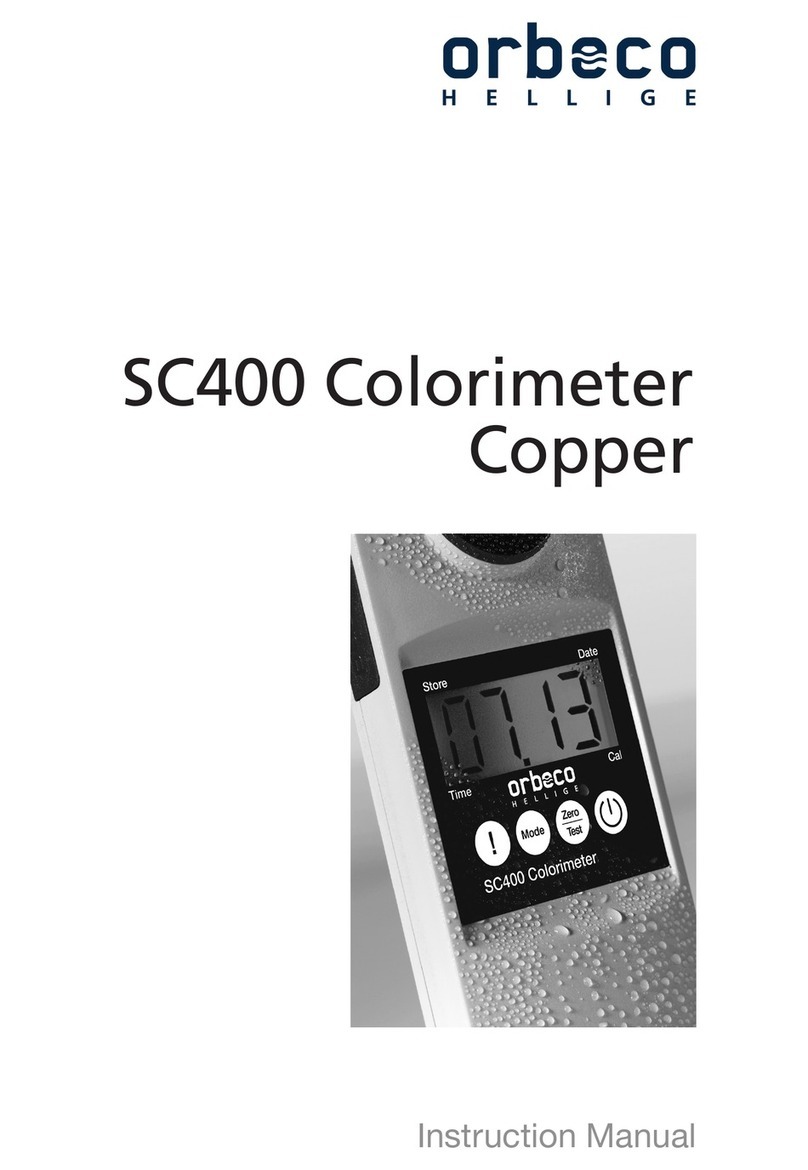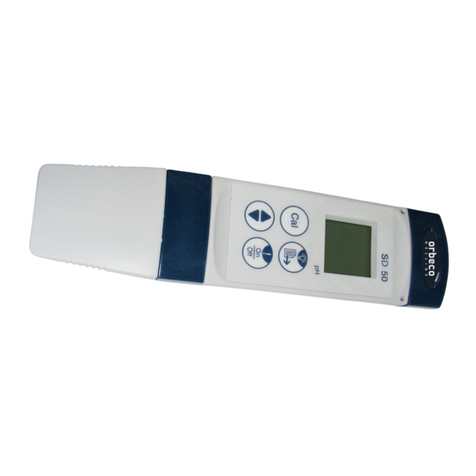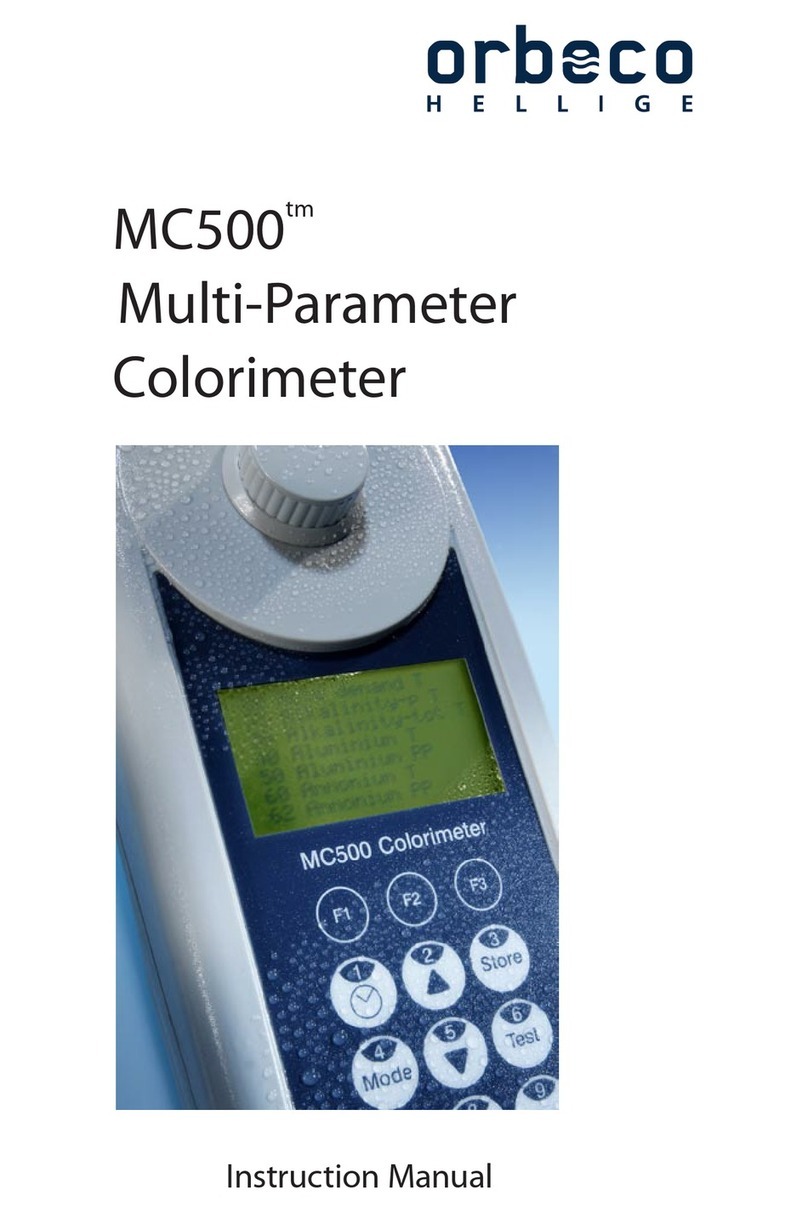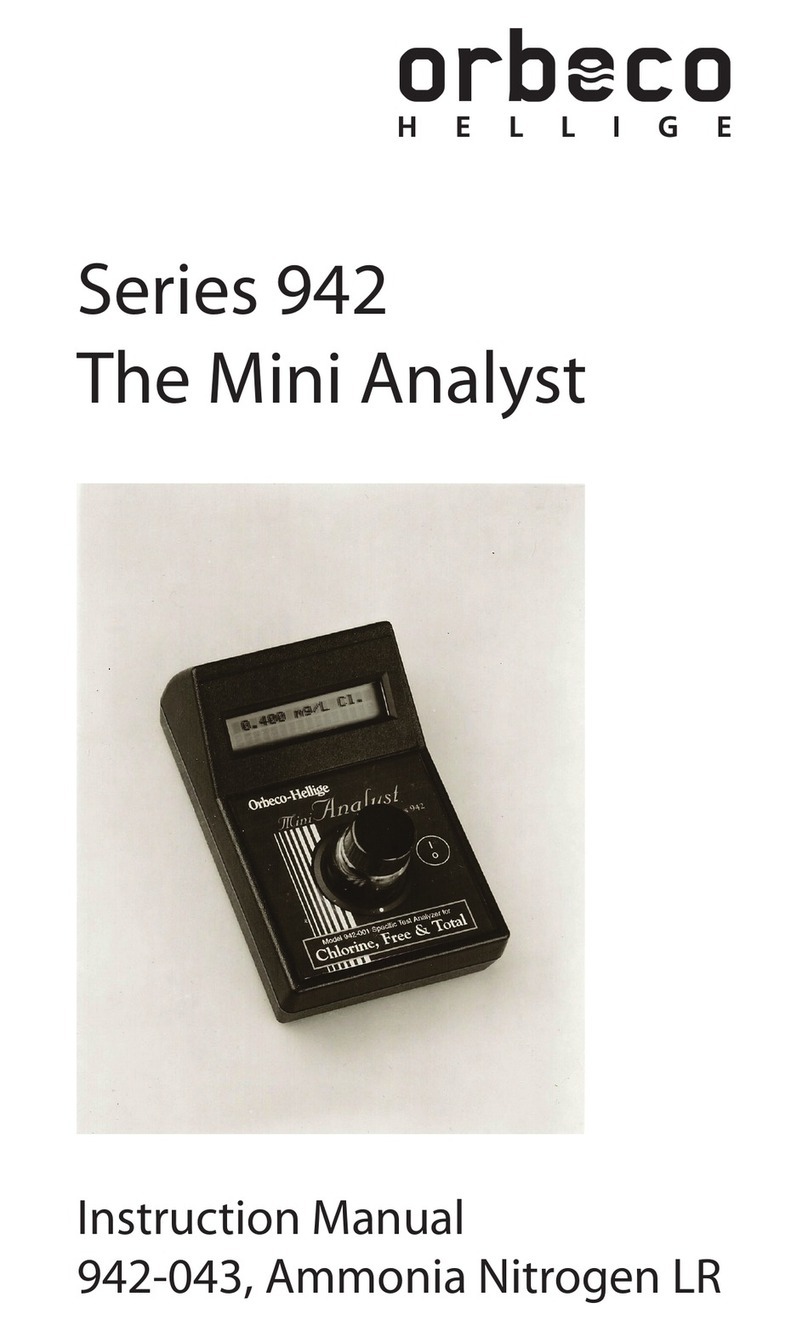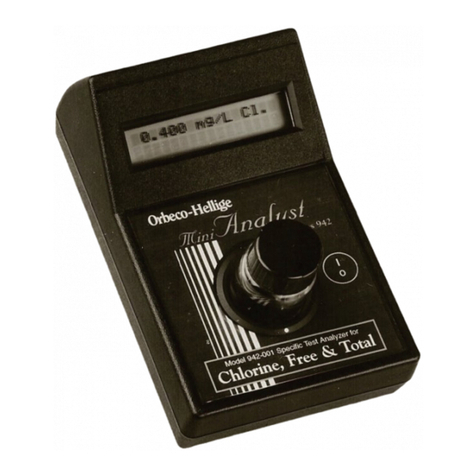Declaration of CE-Conformity
Déclaration de conformité CE / CE -Declaración de conformidad
———————————————————————————————————————
Manufacturer / Fabricant / Fabricante:
Orbeco-Hellige, Inc. / 6456 Parkland Drive / Sarasota, FL 34243-4036 / U.S.A.
———————————————————————————————————————
Product name / Nom du fabricant / Nombre del productor:
SC450, Single Prarameter Colorimeter
———————————————————————————————————————
Declaration of EC-Conformity according to DIRECTIVE 2004/108/EG OF THE
EUROPEAN PARLIAMENT AND OF THE COUNCIL of 2004, December the 15th.
The manufacturer declares that this product meets the requirements of the
following product family standard:
Déclaration de conformité CE conformément à la DIRECTIVE 2004/108/CE DU
PARLEMENT EUROPÉEN ET DU CONSEIL du 15 décembre 2004. La fabricant
déclare que le produit est conforme aux exigences de la norme de famille de
produits suivante :
CE - Declaración de conformidad conforme a la NORMA 2004/108/ CE
DEL PARLAMENTO Y DEL CONSEJO EUROPEO del 15 de diciembre de 2004.
El fabricante declara, que este producto cumple con las exigencias de la
siguiente norma correspondiente a la familia de productos:
———————————————————————————————————————
EN 61326-1:2006
———————————————————————————————————————
Basic immunity test requirements (Table1) / Emission according to the
requirements for class B equipment
Conformément aux exigences fondamentales relatives aux essais d'immunité
(tableau 1) / Émissions parasites conformément aux exigences applicables aux
appareils de la classe B
De acuerdo a los requisitos básicos de verificación para la resistencia a
interferencias (tabla 1) / Emisión de interferencias conforme a las exigencias para
aparatos de clase B
Sarasota, FL. 01. November 2010 Bradley K. Martell, President












